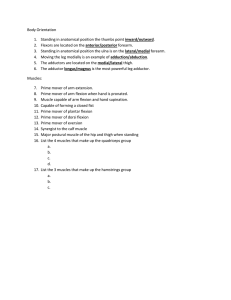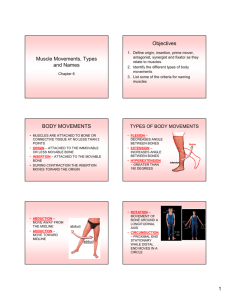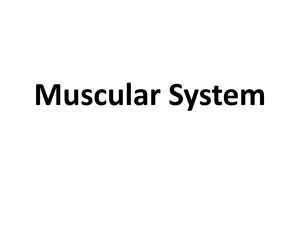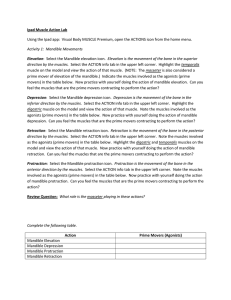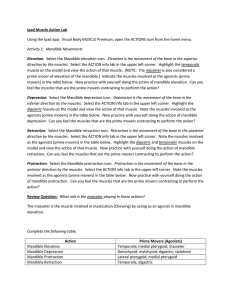Functional Groups of Muscles
advertisement
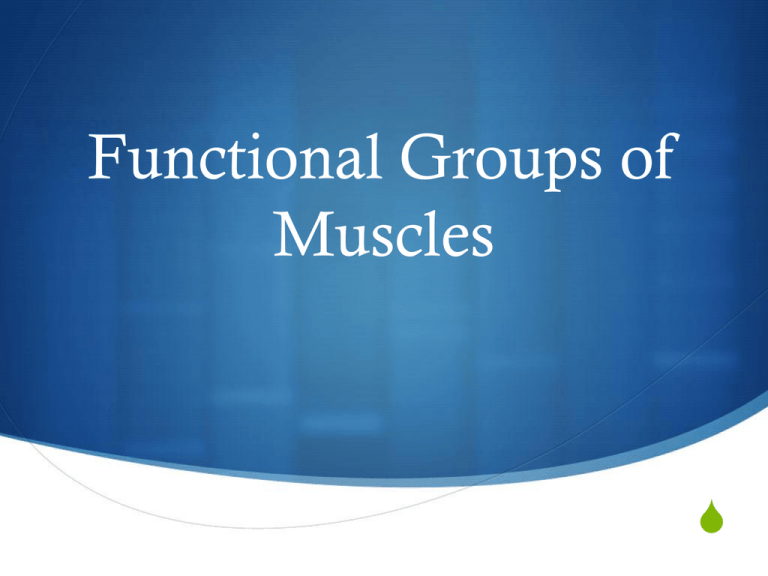
Functional Groups of Muscles S S Prime movers (agonist) S Antagonist S Synergists S Fixator S 1 muscle can be in all 4 groups Interaction of skeletal muscles S Skeletal muscles either work together or in opposition S Remember, muscles can only pull (never push) S As muscles shorten, the insertion point generally moves toward the origin S Whatever a muscle (or muscle group) does, another muscle (or group) ‘un-does’ Functional Groups S Prime Mover S Provides the major force for producing a specific movement S -Ex: Bicep Brachii is the prime mover when you flex your arm at the elbow Functional Groups S Antagonist S Opposes or reverses a particular movement S Regulates the motion of the prime mover by contracting and providing resistance S Ex: Triceps is the antagonist for flexing the arm at the elbow S *Prime movers and antagonists are located on opposite sides of a joint across which they act Functional Groups S Synergists S Help and assist prime movers S Add extra force to a movement S Reduce unnecessary movement as prime mover contracts S Ex: Brachiordialis assists in the flexion of the elbow Functional Groups S Fixator S Synergists that immobilize a bone or muscle origin S Ex: The muscles of the rotator cuff help stabilize the arm when it is flexed at the bicep Muscle actions S Which muscle is the prime mover and what is the antagonist: S Flexion at the elbow? S Flexion at the knee? S Extension at the elbow? S Extension at the knee?


